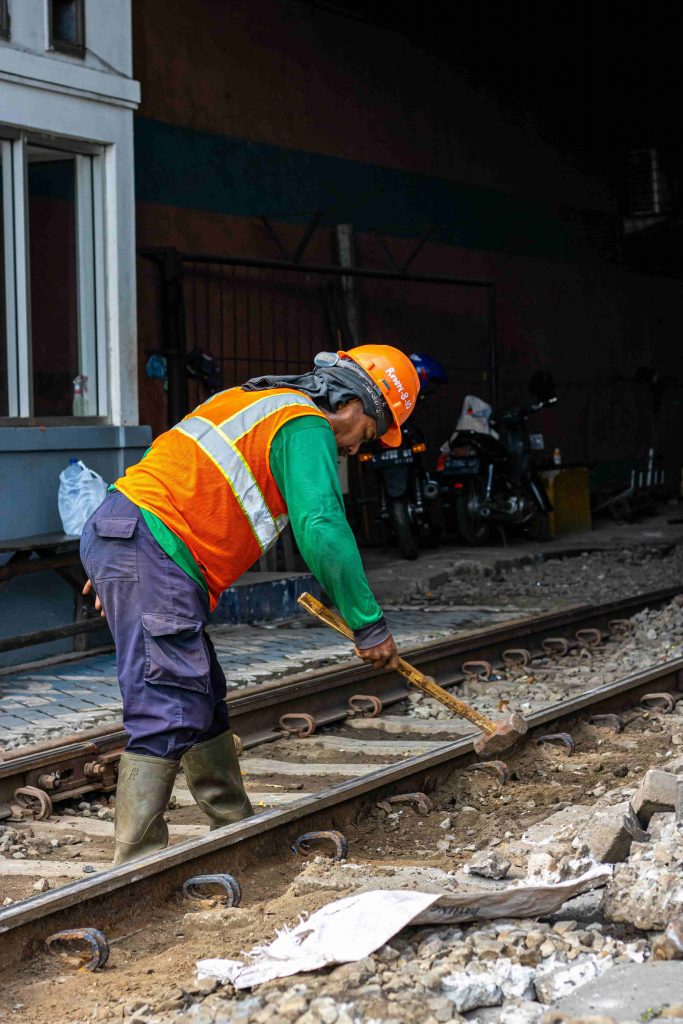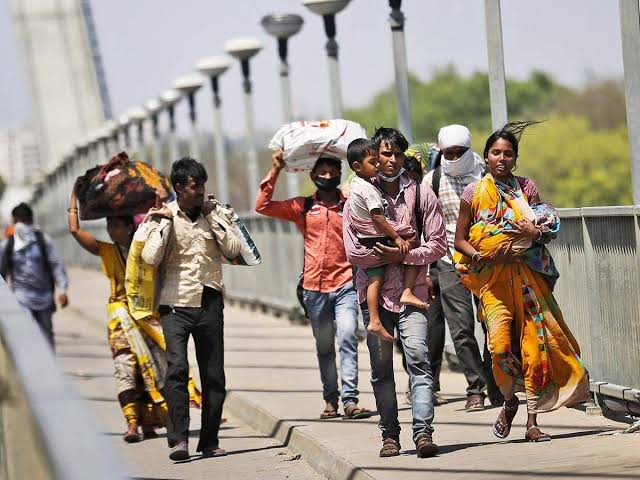
No worker is inherently vulnerable. Workers are made vulnerable by laws that facilitate relationships of inequality and laws that fail to address exploitation.
Fay Faraday
Fay Faraday is not wrong. Workers in India used to enjoy a pro-labour regime at least in the formal sector, till the pandemic hit the shore. This was when the true vulnerability of the labourers came to light via the deplorable conditions of migrant labourers that were broadly advertised.
Why were they left stranded? How were their rights not protected in spite of an entire Act having been dedicated to them? What’s worse is that the pandemic gave the government an excuse to amend the laws to make them pro-employers/investors in order to garner investments and make India the manufacturing hub it always intended to be.
This view is corroborated by the latest developments in the labour laws, in the garb of ‘boosting the economy’ and ‘the need to increase GDP’; and the labourers found themselves on the bad side of this deal.
While, they were provided with the much-needed employment, imperative for their survival but, at what cost? Their working hours were increased and most of their protections guaranteed through a multitude of legislations were taken away. These legislations have placed the labourers in a perfect position to be exploited and left them vulnerable. In order to understand the rationale behind this move by the government, lets backtrack and understand the evolution of labour laws in India.
Introduction
Apprentices Act, 1850 was the first Indian labour law, inducted at the time as orphan children used to be employed in industries and factories which entailed training. A few years later, with industrialization came coal mine explosions, which brought the government’s attention to the need for protection of workers and a series of such events finally culminated in the complete nationalization of the sector in 1973.
Labour laws are the laws that regulate the employment conditions in India. It defines the rights and obligations of employees, employers, labour unions, etc. It has an impact on billions of individuals working in the formal sector but on none in the informal sector. India had 40 central and more than 100 state legislations that pertained to labour law, most of which were very recently in September 2020, consolidated and codified into 4 laws; these laws with a few remnant laws together constitute our labour laws.
The previous laws were ancient, some having been enacted as early as the British rule. The general perception with regard to labour laws of India are that they are over- protective, over- reactive, fragmented, outdated and irrelevant and have created hurdles in achieving the economic goals, particularly given the global competition and economic recession. The laws seem to be rigid and the reforms are not only sporadic but also very slow to come. The way they are spread across 100 different legislations doesn’t add to their credit.
India’s legislation after independence were meant to be pro-labourers as we had seen domination and didn’t want any future company to have such power on the domestic labour. Hence, the laws are ‘over-protective’ from the point of view of the employers. They have restrained rights when it comes to controlling administration when it pertains to worker’s rights. They wanted a freer hand in order to be able to conduct their business in a way they deemed fit.
This is the precise reason why time and again, proponents of labour reforms have emphasized the need for upholding managerial prerogative by revoking the ‘draconian’ labour laws and restraining the inspectors thriving on them. They have not minced any words in suggesting that Indian provinces which took a pro-labour stance witnessed lower output, lower employment and lower investment in manufacturing sector during 1958- 1992.

In the words of the Former Niti Aayog chairman Arvind Panagariya, ‘The labour situation is incredibly complicated: when you go from six workers to seven in a firm, Trade Unions Act kicks in. When you go from nine to ten, the Factories Act kicks in. And when you go from 19 to 20, something else kicks in, as happens again when you go from 49 to 50 and 99 to 100. The biggest killer is the Industrial Disputes Act, which says that if you are a manufacturing firm with 100 workers or more, you cannot dismiss any of them under any circumstances unless you get prior approval from the government.’
Hence, it was clear that the government was on the employer’s side but it is emphasized that they were pushing for liberal labour laws, not for the benefit of the domestic employers but to attract the foreign investors which would then incentivize the domestic players to expand their business. Six years ago, it was the Vasundhara Raje-led government in Rajasthan that started the labour law reform process, when the Indian Parliament couldn’t but was it really for the better?
While in a win for the employers and government’s new Acts in pursuance of liberal labour codes (from the employer’s perspective) were promulgated only the formal sector is given the complete protection of these laws. Only two of the new codes include the informal sector despite the fact that 93% of the Indian workers fall under this sector. When the majority of the population employed in a sector is out of the purview of laws that would provide them with certain basic rights, are the current laws of any value?
Objectives and Aims
Labour laws are on the concurrent list; both the Centre and States can legislate on the subject. Labour laws are enacted to maintain peace and promote welfare of labour. It regulates employment conditions and ascertains each individual’s rights.
The Code on Wages Act, 2019 envisages regulating wage and bonus payments in all employments where any industry, trade, business or manufacture is carried out. The Occupational Safety Code, 2020 pertains to safety, health and working conditions. The Industrial Relations Code, 2020 seeks to replace three labour laws and will regulate the relation between employers and employees in the industry and define their role. Social Security and Welfare Code, 2020 expounds on the measures to provide individuals and families an income when regular sources are disrupted, or finished due to extensive expenditures. Social security may be given to an individual in a financial crisis, in cash or kind (like medical or legal aid).
Impact of Covid-19
With the advent of the COVID 19 pandemic, millions of workers were rendered unemployed, needless to say when the situation of the workers in the formal sector was precarious the situation of the one’s in the informal sector was much worse. The stories of the plight of the inter-state migrant workers are etched in our memories.
The government, instead of finding a solution, took this as an opportunity to enact laws which, I believe it is pertinent to mention, were not supported by the opposition parties or trade unions. Amidst the suspension of ‘question hour’ and chaos wrecked by the pandemic, they introduced the laws which were very recently codified pieces of extensive legislations.
In India, our democratic government takes years, debating over the suitability of an Act, before promulgation and rightly so as the opinions of all the representatives of the country need to be taken into account before a Bill is enacted. While the delay in enactment is never really applauded it is inevitable in as large a democracy as our country. What’s worse about these enactments? Some of the provisions enacted were apparently not mentioned in the Bills.
To add to the woes of the workers many State governments enacted regulations of suspension of labour laws in the garb of the necessity for boosting the economy. MP Government in addition to suspending some fundamental labour laws also announced that new investors would not have to adhere to some elemental labour laws for a period of 1,000 days. They renewed inspection laws replacing the dreaded labour inspectors with third-party certification. The relaxation of labour laws for the new industries meant easier hire and fire policies and prohibition of trade unions from mooting for their concerns.
It is underlined that these relaxations were applicable only to new industries. UP took cue and suspended all, save three of its labour laws- Building and Other Construction Workers Act, Bonded Labour System (Abolition) Act, and Section 5 of the Payment of Wages Act, for a period of 3 years. It was Gujarat’s turn to follow and it announced the suspension of all labour laws for 1200 days. Assam proclaimed that it would enable fixed-term employment of workers i.e. hire them for a specified time after which they can be let go off. The worst of all being they recommended the increase in the working hours of the labourers to 12 hours. This has had a domino effect, with Punjab and Rajasthan also deliberating on amendment of their labour laws.

According to the Centre for Monitoring Indian Economy (CMIE) over 120 million Indians have lost their jobs, with three-fourths of them being small traders and wage labourers. The laws are so well timed that a laborer could only reason that while these laws add to their suffering, at least the employment it guarantees would save them from destitution. It is stressed emphatically that this is the situation of the formal sector, the informal sector didn’t have any safeguards to begin with, to have any chance to fight against these atrocious amendments.
Such a free hand given to the employers will only lead to more unemployment, as one must remember that they also faced losses during the pandemic and so to cut their losses with relaxed regulations they will let go of workers who will end up in the informal sector. These relaxations could have been advocated for in these tough times but the rationale behind suspending laws like Minimum Wages Act is beyond comprehension. This is a blatant exploitation of workers’ basic rights.
The legality of these amendments must be contested in courts, it’s a surprise such an uprising hasn’t already started, probably because the poor workers need this, very literally, for their survival. Nonetheless, if their excuse for such exorbitant relaxations was that flexibility was imperative for getting the economy back on its feet and to increase employment then the outcome will grossly negate the purpose, as increasing the working hours instead of having shorter hours and employing more workers, will have an effect contrary to the one apparently expected.
Challenges
The new labour codes pose several new challenges. The Industrial Relations Code, 2019 states that at least 10% of the workers or 100 workers will be required to form a trade union as against 7 before; further it prohibits outsiders, ministers, a person holding an office of profit from joining the union. The trade unions, RSS-affiliated Bharatiya Mazdoor Sangh (BMS) and the Left-backed Centre of Indian Trade Unions (CITU) both vehemently opposed this claiming the government shouldn’t meddle in the business of the trade unions. They further added the number cited for forming a union is unrealistic and is basically a trap to subject workers to the employers’ barbarities without respite, as they would never have a union to fight their cause.
While Unnikrishnan, chairman of the CII National Committee on Industrial Relations, enumerated the benefits of a single union and claimed more than one only hinder conciliations, on the rare occasions that they do happen. It has also increased the threshold mandated for prior permission of the government for lay-off, retrenchment and closure to 300 workers, from what was 100 earlier.
The trade unions reiterate without labour unions such a move would only render more individuals out of work as they could easily be fired for simply demanding their basic rights. Further it was accentuated that with development, the demand for manual labour has already become scarce, the employers’ don’t even need this provision; in fact the government should have decreased the limit in keeping with the current demands. To this the industry replied that most industries run with unnecessary labour, who are dead weight to the company, only to avoid the elaborate process established by law and they shouldn’t be forced to do so.
Another draconian provision going against the tenets of our very democracy was that strikes will not be carried out unless a 60-day prior notice is given, which spelled out is a ban on strikes. The industry on the other hand believes that strikes only add to unrest and they do not garner solutions. While the Social Security and Welfare Code, 2019 was adverted to be all-encompassing in terms of kinds of workers it fails to incorporate migrant workers in its long list.
In addition to the new codes the remaining labour laws also underwent some changes. For example, the Factories Act, 1948 changed the minimum requirement of workers to constitute an establishment from 10 to 20 and for those which do not use power from 20 to 40.

This was also fervently opposed as this would make a lot of units informal overnight and it was put across that labour laws should not require a minimum number to be applicable to a laborer in a factory, even a single manned factory, must engender labour laws to be applied to him. The Occupational Code faced a lot of backlash when it was introduced, while it was meant to simplify the laws pertaining to health and safety spread across several legislations, the provisions relating to certain workers like working journalists are still distinct, and the reason for such distinction hasn’t been explained.
India’s biggest advantage is its population but we have completely neglected it and failed in reaping benefit out of it. The main purpose of the reforms in India was to garner investment from foreign companies and to replace China as the manufacturing hub, but the ineffectual legislations together with ineffective implementation has rendered us unable to achieve the same.
India did not evolve with changing times and the emerging trends of labour in the world. It is imperative that all the codes of labour are implemented across all the sectors whether formal or informal which has not happened. What is important to note is that one of the prime factors which has shepherded our failure in making our labour market a success is the lack of skilled labour. A prudent investor would never invest in unskilled labour market.
A study of Planning Commission (2001) indicated that only 10.1% of the male workers and 6.3% of female workers possessed specific marketable skills in the rural areas while only 19.6% of male workers and 11.2% of female workers had requisite skills in urban areas. India has still not ratified ILO conventions on freedom of association and right to collective bargaining despite of them being extremely important concepts in a worker’s life to safeguard his rights!
Conclusion
Should any political party attempt to abolish social security, unemployment insurance, and eliminate labor laws and farm programs, you would not hear of that party again in our political history
Dwight D. Eisenhower
These wise words of Eisenhower seem laughable seeing India’s situation today. Each one of those rights of workers has been abolished; while one may argue these are tough times and a little restriction harms no one but the extent of these prohibitions were definitely uncalled for.
Contrary to popular belief, occupational safety and healthcare provisions and standards play a crucial role in a country that is unlocking despite COVID-19. Stringent regulations vis-à-vis sanitation and hygiene will have to be maintained; during such a critical moment diluting labour laws and relaxing the obligations on the employers will only lead to massive outbreaks of coronavirus, deteriorating the health of many workers consequently decreasing our working labour force.
The government has introduced flexibility in our labour laws, in pursuance of which the employees are now left at the mercy of the employers; from their working condition to their wages everything is upon the employer’s discretion. The question remains what is the guarantee this will attract investors as we still lack skilled labourers by a long margin. Taking advantage of a weak moment in the national history, the government’s complete revamp of our labour laws and permitting the states to tweak their domestic laws to push through legislations that MIGHT garner foreign investment, while DEFINITELY compromising the nation’s own workers’ safety for a very long time if not indefinitely, was a conniving move.
Editor’s Note
The ongoing pandemic has, without a doubt, affected the whole world and India is not an exception to the same. However, laborers and migrant workers have been the most adversely affected class of people, particularly in India. This article analyzes the four new labor laws introduced in September 2020 namely- the Code on Wages, 2019; the Occupational Safety Code, 2020; the Industrial Relations Code, 2020 and the Social Security and Welfare Code, 2020. The evolution of labour laws in India along with the aims and objectives of various labor laws have been discussed as well. The author has also described the impact of Covid-19 on the labor laws as well as the challenges that are faced in implementing them. The author concludes by saying that the advent of these new labor laws at such a time would definitely compromise the safety of the workers of this nation, for a very long time.